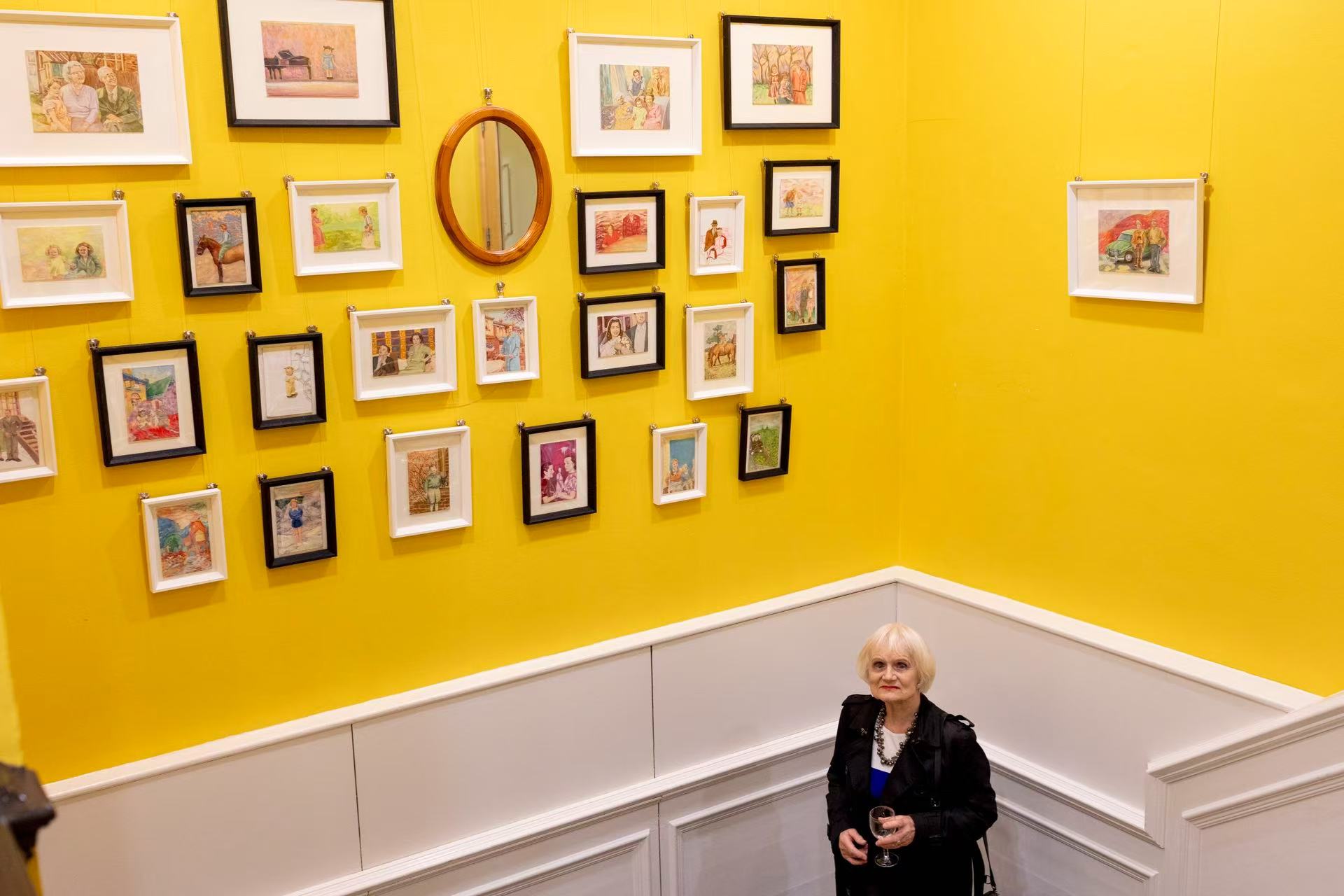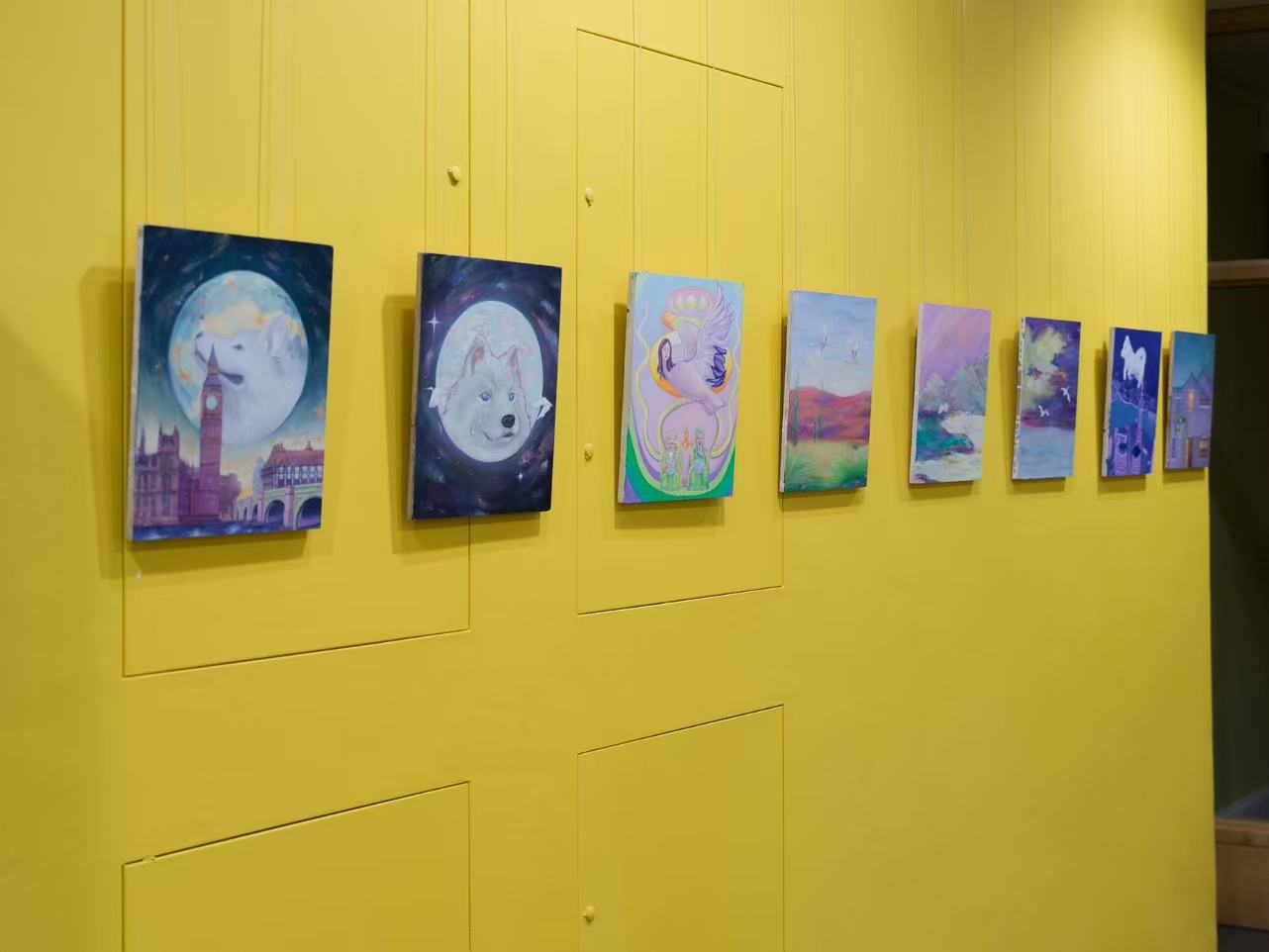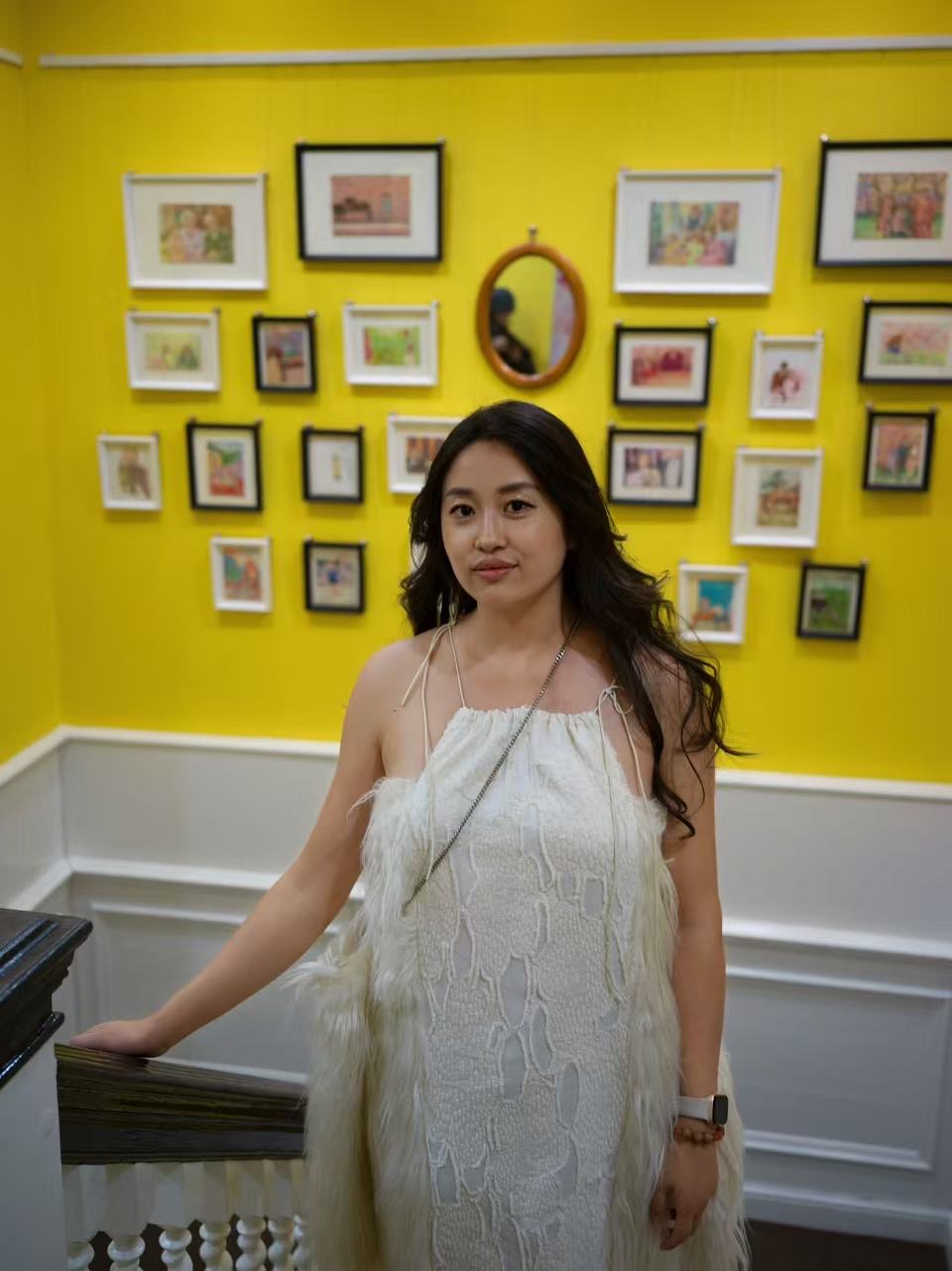The Missed series is a rather sentimental body of work by Chinese-born and London-based artist Xinan Yang that wrestles with themes of memory, identity, belongings, and cultural displacement. Her solo exhibition From Home, on view from September 11 to October 7 at Lauderdale House, coinciding with the Chinese Mid-Autumn Festival, celebrates family togetherness. Yang’s paintings hold tension in their visceral realities and undeniable vulnerabilities.
As I entered the Lauderdale house, at the turning of the staircase, a vibrant yellow wall display with Yang’s Missed series – oil paintings of blurred, anonymous figures frozen in the timelessness of family life. The salon-style display mimics the photo arrangements often seen in living rooms, almost déjà vu-like sense of home. Though modest in scale, the work is conceptually dense. Further enquiry, artists capture these fleeting moments of remembrance through collected family photos found in flea markets, delving into the themes of collective memory, loss and grief.
What should be comforting is also uncanny – the familiar becomes unfamiliar.
‘These fragile photographs are the sole physical evidence of these once present individuals that existed in the world, challenging fundamental binary oppositions such as “past/ present,” “alive/dead,” and “presence/absence.” The presence of their past surrounds me now reduced to a common commodity.’ — Xinan Yang
The use of second-hand photographs is Yang’s practice, not only an aesthetic choice but also a critical strategy – one that first emerged in her early family portrait painting I Still Care, exhibited in the Saatchi Gallery during London Grads Now 2020. Yet, in the Missed series, Yang engages the politics of photography itself — using painting to meditate on the time, reframe the family narrative and reclaim both its truth and gap.


It requires massive care and resists the immediacy of the snapshot. Her approach is grounded in Max Weber’s concept of verstehen — “understanding through feeling.” Painting, for her, is a form of sociological inquiry; she examines the identity and formative experience of the family dynamic and reinterprets through the paintbrush. Does not seek to reconstruct the lost identities but honors their unknowability. The softness of facial features is not a concealment, but an invitation – a gentle ambiguity where the collective family can unfold without being bound by identity.
Entering the corridor, the second half of the exhibition shifts from archival recovery to internal myth-making. These images feel both personal and archetypal, rendered in soft yet layered tones, they drift between magical realism and reality. The symbol emerges from Xinan’s own diasporic experience, forming a visual grammar of distance, care and return.
“ I transitioned from critiquing family album to expressing my sense of displacement from my homeland and family, through symbolic visual language. Bird, for me, represents cyclical migration and desire for spiritual return. Our family dog stands in emotional substitution and as a symbol of family ties. The moon, as a recurring motif in this part of the exhibition, embodies longing. rhythm and reunion.” — Xinan Yang


Through the contrast between the dense arrangement of archival works and the openness of her symbolic paintings, Yang creates a visual rhythm of contraction and release. Viewers are invited to step in close, examine intimate details, and then step back into the border compositions. This careful pacing echoes the emotional texture of diasporic memory, fragmented and nonlinear. From Home does not seek to resolve – they resonate the ambiguity of identity, home, and emotional distance.
A distinctive aspect of Yang’s practice is her ability to maintain contradictory/ambiguous stances without resorting to cliches. As an Asian woman artist working in the UK her work contributes meaningfully to the ongoing and evolving definition of British visual culture – a culture shaped by a multiplicity of cultural layerings and transnational intimacies. Rather than offering a definitive narrative of migration or memory, Yang proposes a visual and emotional space where such narratives remain open, non-prescriptive and deeply human.









